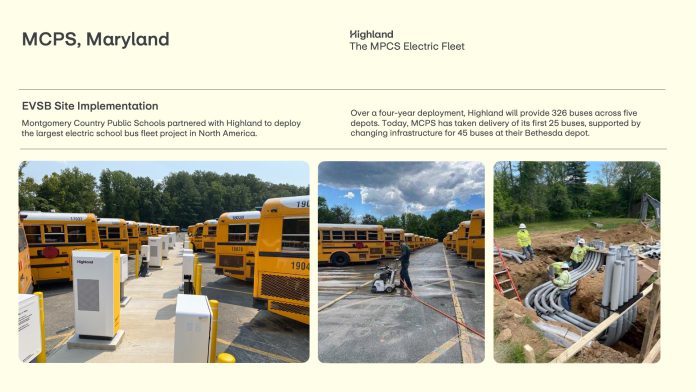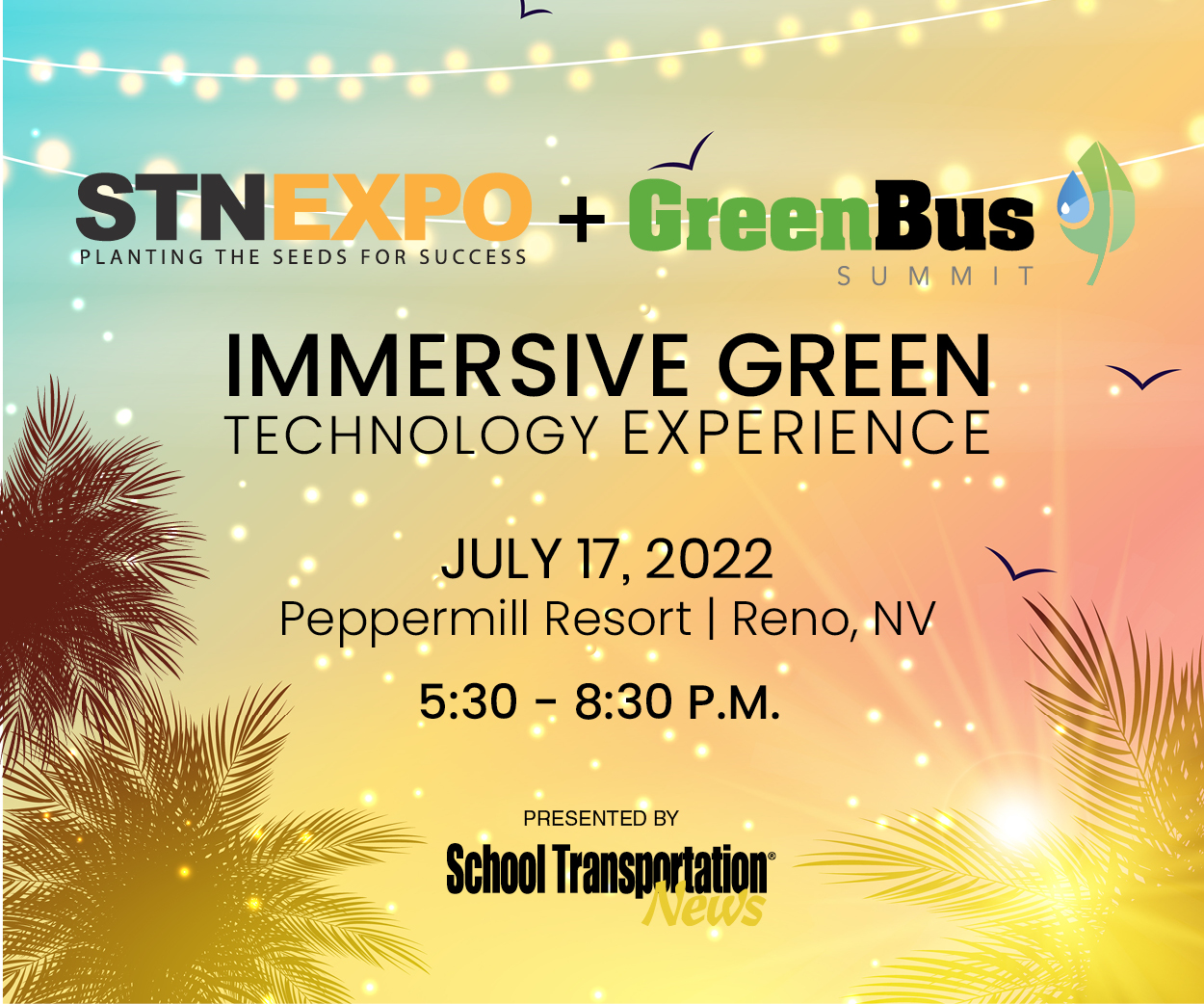A webinar featuring case studies of fleet electrification by school districts examined the details and partnerships that go into a successful endeavor.
While the U.S. Environmental Protection Agency (EPA) Clean School Bus Program is the largest school bus funding opportunity in U.S. history, getting an electric bus isn’t a walk in the park, noted Duncan McIntyre, CEO of webinar sponsor Highland Electric Fleets, during the event on Thursday.
Amy McGuire, Highland’s director of market development, explained that the program’s $5 billion is split between zero-emissions buses (battery-electric) and low-emission buses (CNG or propane), with the first round of $500 million now open for applications through Aug. 19.
“We feel confident and comfortable with the funding levels,” she said. “We feel this can help a lot of districts get started.”
McGuire explained that through the EPA’s complex selection process, the goal is to allocate funding, in terms of a rebate, for one project in every state. Priority districts in disadvantaged communities, which are classified as tribal, rural or below the federal poverty level, will receive more than other districts. Electric buses are prioritized over CNG and propane buses.
Depending on the model-year of the vehicles being replaced, they will need to be scrapped, sold or donated, she explained. A school district can either partner with a private fleet or take on the task of implementing the buses itself.
“It’s a great opportunity, but that’s not to say it’s a simple process,” she cautioned.
The costs include the remaining price of an electric bus beyond the allocated funding, charging infrastructure, bus and charger maintenance, and depot upgrades. Construction challenges include project planning and engineering, utility upgrades, permits and construction management. Finally, operational complexities include driver and technician training, Vehicle-to-Grid (V2G) management, and troubleshooting.
Tim Shannon, director of facilities planning and efficiency for Twin Rivers Unified School District in northern California, currently boasts the largest operable fleet of electric school buses in the U.S. However, he said that infrastructure took nine months to set up and that buses initially took five days to charge.
“It was virtually a nightmare,” he said.
Grants aren’t an easy process, he shared, and much reporting is required. “Grant money isn’t free money, it’s money you can use, but you have to participate in the program,” he underscored.
Twin Rivers USD currently runs 57 electric buses and is working on infrastructure upgrades to V2G technology.
It was a tough process, Shannon said, but it was all that was available at the time.
Related: California’s Twin Rivers Unified Wins ACT Expo Fleet Award
Related: (STN Podcast E92) Conversations at STN EXPO Reno: Twin Rivers USD’s Electric School Bus Journey
Related: Calif. District Adds to Largest Fleet of Electric School Buses
Drivers were apprehensive at first but now they enjoy driving the EVs, Shannon relayed. He added that the school board looks favorably on the community impact, with quiet buses roaming the neighborhood and not spewing diesel particulate matter.
“Look at the data and savings. Why would you want to own a diesel or CNG or propane [school bus]?” Shannon queried. He noted that savings increase as fuel prices go up.
Drivers report better torque and braking and more fun while driving electric buses, McIntyre added, and driver satisfaction makes a difference in talent retention.
He reviewed the list necessities for a successful EV implementation: reliable manufacturer for both the buses and charging infrastructure, trusted dealers, management software, resources and support for training, and a baseline set of guarantees.
“You should think about a strategy to operationalize these pieces together,” he said.
No matter how much a district receives from the Clean School Bus Program, McIntyre said that fleets of a certain size looking to transition to electric are supported financially due to Highland’s interest in promoting the benefits of electric school buses.
Highland works with districts of varying sizes across the U.S. and Canada, from those with four buses to those with over 300.
At Beverly Public Schools in Massachusetts, which has five electric buses and five chargers, Highland future-proofed the depot by installing infrastructure for 24 buses. The site is powered in partnership with utility National Grid, enabling V2G connectivity and providing some extra income.
“Look down the line as far as you can,” said Sean Leach, Highland’s manager of training and fleet operations. He added that digging into the ground to adjust the necessary infrastructure should be done in a way that’s as cost-effective and minimally invasive as possible.
McIntyre highlighted the goal of holistically improving a school district’s operation.
Related: (STN Podcast E116) Electric Promise: What Today’s Economic Landscape Means for School Buses
Related: Successful Electric Infrastructure Project Management Subject of STN EXPO Reno Panel
Related: ACT Expo Panelists: It Takes a Village to Electrify
Related: Five Ways U.S. States Can Get More Electric School Buses on the Road
Related: Colorado Legislature Greenlights $65M for Purchasing Electric School Buses
Recently, Montgomery Country Public Schools in Maryland partnered with Highland to deploy a large-scale electrification project, starting with four EVs and ultimately looking to acquire 326 more over a four-year deployment that operate out of five depots. Project management for the permits and construction is critical, McIntyre said.
Purchase orders must be issued after any EPA funding has been awarded, McGuire cautioned. This may result in orders backing up due to supply chain disruptions, McIntyre acknowledged. But he added there is hope that the process will flow more smoothly in the future.
While private contractors cannot apply for the CSB rebate themselves, they can partner with a school district or manufacturer that is requesting funds.
Register for STN EXPO Reno and attend the Green Bus Summit on July 17 at no extra charge.















